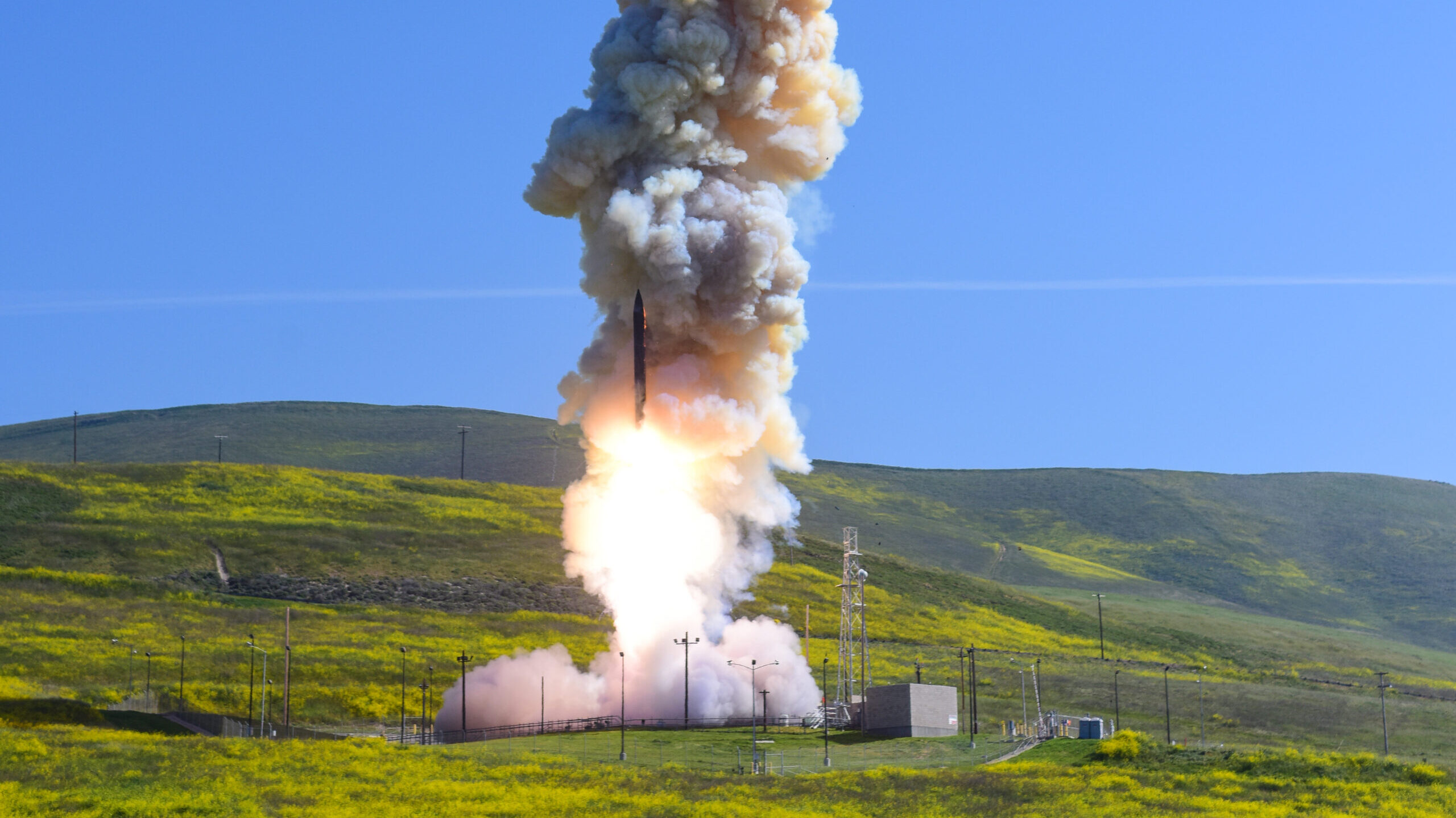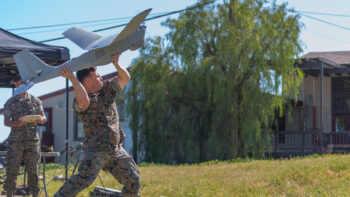
A test of the nation’s Ground-based Midcourse Defense system, was conducted from North Vandenberg Monday, March 25 at 10:32 a.m. PDT by 30th Space Wing officials, the U.S. Missile Defense Agency, and U.S. Northern Command. (Jose Davila/Air Force)
PENSACOLA, Fla. — The Missile Defense Agency expects to choose a single contractor to move forward with the Next Generation Interceptor homeland defense program this month, MDA head Lt. Gen. Heath Collins said today.
In written testimony submitted prior to a House Armed Services Committee hearing, Collins said MDA planned to “select the contractor to continue development, testing, production, and fielding of Nation’s Next Generation Interceptor” in April 2024. Collins said the NGI program “will transition to its Product Development Phase in May 2024.”
MDA was previously expected to pick a winner between two teams of competitors led by industry behemoths Northrop Grumman and Lockheed Martin next year, after the critical design review (CDR) phase of the program had been completed. But Collins testified to lawmakers that MDA sped up the process to save money and with confidence the agency knew enough about the options on the table to make a choice.
During the hearing, Collins told lawmakers, “The NGI program remains on track. Both prime contractors have successfully executed preliminary design reviews, and MDA is preparing in the near future to complete a best-value determination and select a single company to continue NGI development testing, development, production and fielding.”
Collins acknowledged that “far-reaching” “fiscal realities” had been a “catalyst” for moving the decision up, but emphasized that the agency believes it has a “full, in-depth understanding of the designs from the two primes” who had “progressed very, very well” ahead of a CDR.
“We fully understand … the transition to production plans and the risks that are still involved with both primes,” he said in response to questioning from a skeptical Rep. Dale Strong of Alabama, home to much of America’s missile defense enterprise. “We believe that the level of risk is well below the department standard of making a decision such as this.”
Collins said that the department had not, however, conducted any study or assessment as to the impact of such a change in acquisition strategy.
His written testimony explained that MDA “applied lessons learned from other large-scale defense programs that faced increasing costs due to extended design phases involving multiple competitive solution teams which adversely impacted schedule.”
The leap forward is the latest for the acquisition in which program managers and the primes involved have sought various ways to accelerate their schedules, aiming to meet a looming 2028 operational deadline.
NGI is the long-sought enhancement to the current Ground-Based Midcourse Defense (GMD) program and is, according to Collins, the “absolute foundation for homeland defense into the future.”
As of February, the agency planned to buy 20 NGIs to augment the current GMD’s Ground-Based Interceptors. GMD is designed to defend the US homeland from “rogue” North Korean or Iranian ICBM attacks. NGI is one of MDA’s biggest planned investments in its FY24 budget at $2.1 billion, which the agency’s budget overview says “features a multiple kill vehicle payload.”
RELATED: Missile Defense Agency takes $500M cut to $10.4B in FY25
MDA awarded NGI development contracts to the two teams — Northrop Grumman, partnered with Raytheon (now RTX), and Lockheed Martin, partnered with Aerojet Rocketdyne (since acquired by L3Harris) — in 2021.
Theresa Hitchens contributed to this report.
Marines new ‘Fusion Center’ aimed transitioning cutting edge tech more smoothly
Marine Corps officials said the new office will act as a bridge over the Pentagon’s infamous “valley of death” and will first focus on counter-drone systems.


























